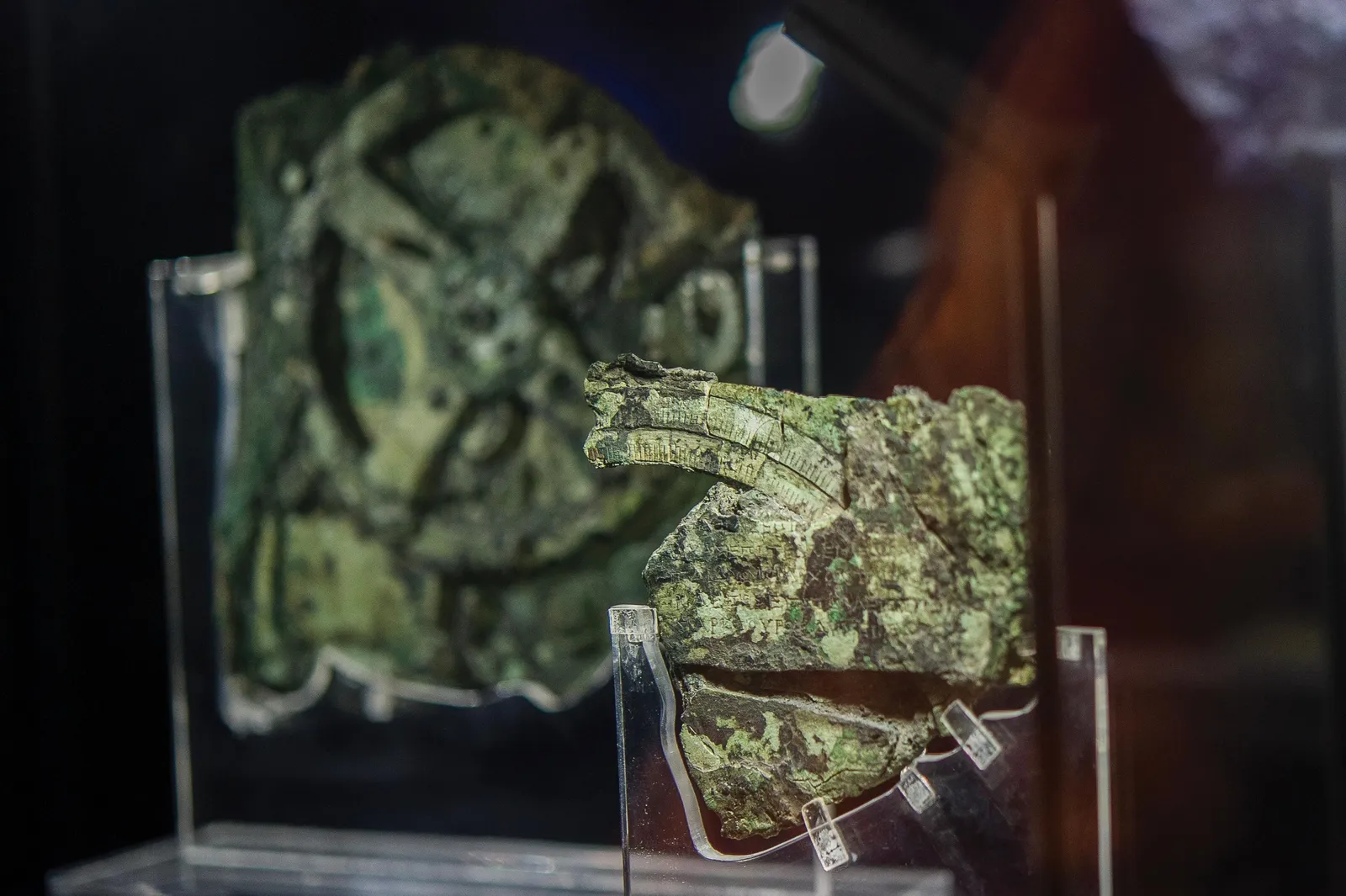By: Jerry Zhang
Made aopproximately 2,200 years ago and commonly known as the world’s first analog computer, the Antikythera mechanism was a tool the ancient Greeks used to track astronomical positions. Discovered in a shipwreck off the shores of Antikythera, Greece in 1901, it has been extensively studied, by researchers and enthusiasts alike, to learn from its operations. However, a new study published this month in The Horological Journal refutes a preexisting notion about the machine.
Graham Woan, a professor of Astrophysics at the University of Glasgow, and Joseph Bayley, a research associate at the same institution, utilized methods of gravitational wave astronomy, a field that examines ripples in space-time caused by cosmic disruptions, to study the Antikythera mechanism. Through their analysis, they concluded that the Antikythera mechanism was, in fact, a lunar calendar. By measuring the size and spacing of the surviving holes and inputting this data into their astronomical software, they discovered that there were 354 holes, corresponding to the 354-day lunar calendar.
Furthermore, this was not the first study to question whether the Antikythera mechanism was a solar calendar. Back in 2020, a team analyzed X-ray images of the remaining holes in the mechanism, claiming to “displace the century-long assumption of a 365-day calendar on the Antikythera mechanism, proposing instead that it is a 354-day lunar calendar.”
However, not everyone believes in these claims. Tony Freeth, an honorary professor at University College London and an expert on the Antikythera mechanism, statesthat there was already a more accurate lunar calendar on the mechanism, questioning, “Why put a second lunar calendar on the mechanism when you’ve already taken a lot of trouble to construct a lunar calendar of great accuracy and sophistication?”
Additionally, Mike Edmunds, former professor of Astrophysics at Cardiff University and the chair of the Antikythera Mechanism Research Project, states that there is “no obvious reason to doubt”, but remains suspicious of these findings. He states, “The suggestion that 354 represents a lunar calendar does not seem to have any other support from within the mechanism — it is not at all clear how it would work and how it would relate to the markings on the front of the calendar ring.”
Despite these differing opinions, the two-millennia-old Antikythera mechanism continues to captivate researchers and remains an enduring mystery despite modern scientific advancements.











